8+ Sample Product Launch Plan
-
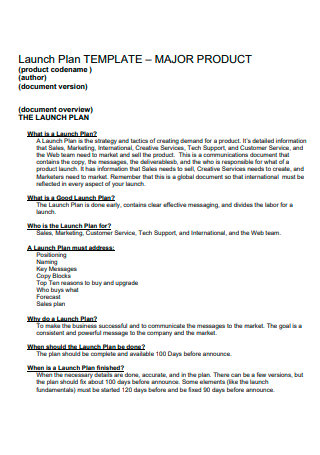
Major Product Launch Plan Template
download now -
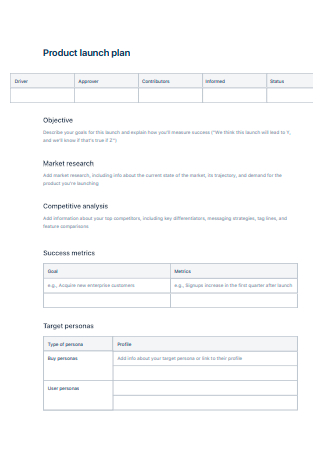
Basic Product Launch Plan
download now -
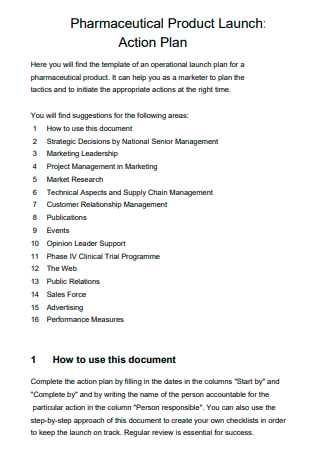
Pharmaceutical Product Launch Action Plan
download now -
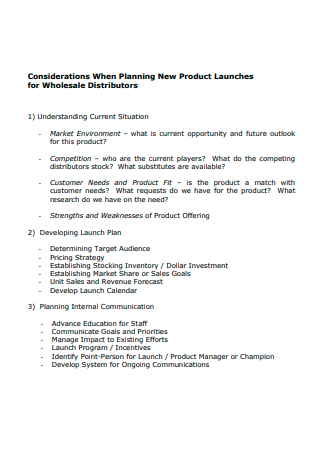
New Product Launch Planning
download now -
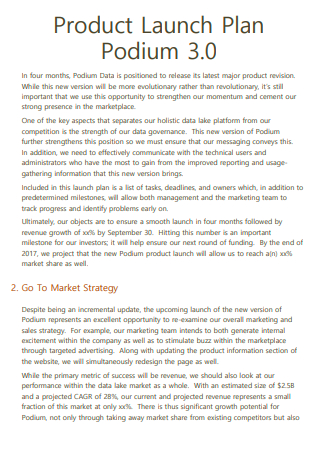
Product Launch Plan Podium
download now -
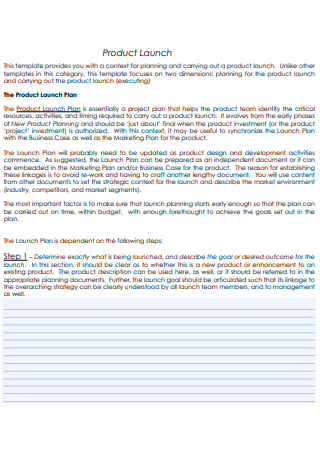
Formal Product Launch Plan
download now -
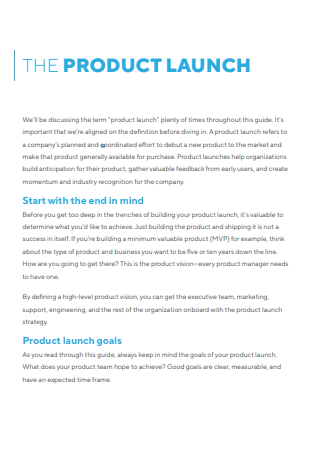
Product Launch Plan Example
download now -
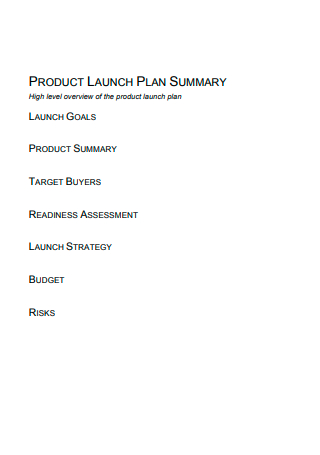
Product Launch Plan Summary
download now -

Product Launch Plan in DOC
download now
FREE Product Launch Plan s to Download
8+ Sample Product Launch Plan
Product Launch Plan: What IS It About?
Advantages of Product Launch Planning
Making the Product Launch Plan
FAQs
What are some of the barriers to a product’s entry into the market?
What are the different pricing strategies in a product launch?
What are the two different types of product launch?
Product Launch Plan: What IS It About?
Spotify’s consistently increasing number of subscribers proved that with a carefully planned and effective product launch plan, your business can become unstoppably successful. That is what a product launch plan is all about. It helps you strategically plan out the introduction of your product, taking into consideration the current, and guides you on the future steps that can help you sustain your product’s momentum in the market. In essence, a product launch plan is a roadmap, a series of coordinated efforts to penetrate the market through the setting of goals and tasks. Once a product has successfully entered the market, the next step a product launch plan needs to include is a marketing plan and a sales plan that helps the product propel further on a long-term basis. It could be done through redesigning and reinventing the product, or having added-value service for loyal customers. At the end of the day, the measurement of a product launch plan’s success is the consumers’ review and feedback.
Advantages of Product Launch Planning
A product launch plan is a tool for marketing strategy. It can be a make-or-break hit for a new product, or it can pull further a product into long-term success in the market through upgrade or innovation. Positioning is the key when it comes to product launching. Knowing your market, having the right tools and resources, are all the makeup of a powerful product launch. We have seen this time and time again when a company launches a new product. They carefully design and develop their product according to the market’s current needs, and they make sure that their product sends out a message that appeals to their potential consumers, eventually converting them into buying customers. Here are some of the advantages of having a good product launch plan.
Making the Product Launch Plan
All product launching needs a map, a roadmap to be successful. This map requires critical thinking, planning, and coordination across all departments to accomplish the business’s goals. This map is known as the product launch plan. If written carefully, this piece of document will provide all of the advantages that we have mentioned and many more. And if used wisely, this plan can also help you later on in identifying the strengths and weaknesses of the strategies taken to launch the product, improving what needs to be improved, or sustaining the momentum through consistent strategic action steps application. There are a lot of ways on how to create a product launch plan. What’s important is that the launch plan has the following basic elements needed to make it effective and successful.
-
1. Identifying Product Launch Goals
The first thing to do is to identify what are the goals for the product launch, or what is the motivation behind the creation and development of the product. The motivation may be to solve an existing market need, to gain a foothold on the market to establish the business, or simply to increase the business’s sales revenue. Identifying product launch goals can also be done in the form of a mission and a vision statement. A mission statement explains what is the reason behind the product and its launching. A mission statement also shares a glimpse into the business’s culture and values. A vision statement provides an outlook of what the business hopes to achieve through the product launch over a given period. It could be that the business hopes to boost sales, with an estimated amount of revenue, within a month or a year into the product’s launching, or it could be to increase customer walk-in or customer base. Either way, the goals should be written clearly and concisely to avoid confusion and misinterpretation for all who are involved in the planning. The goal-setting should provide that tone of urgency that moves the team to work consistently on accomplishing the identified goals.
-
2. Market Analysis
A successful product launch plan meant knowing your market base well. It’s all about identifying your market, your market’s condition, and your market’s needs. To do a market analysis, you can do a demographic classification, grouping your target market into age, gender, income, lifestyle, cultural beliefs, affiliations, advocacies, et cetera. Another way to understand your market is to do a SWOT analysis. SWOT is your product’s Strengths, Weaknesses, Opportunities, and Threats. Strengths are those features or characteristics of the product that makes it unique, stand out from its competition. It’s the benefits that can only be availed through the purchase of that particular product. Weaknesses are the factors that are limiting the full success of the product launch. These factors could be lack of funding for events, promos, campaigns, et cetera; lack of field sales personnel or manpower; lack of tools and equipment; lack of proper marketing training that led to poor launch planning or design, and so on. Opportunities are those aspects that the marketing team can bank on or utilize to fully maximize the product’s launching. Some examples are utilizing the online digital platform or social media or social networking channels to spread the word out about the product; hiring influencers or celebrities to promote the launch event or the product; and/or going into partnership with some of the well-established businesses to leverage on their existing customer base and popularity. Threats are those factors that could potentially harm, put at risk, or be an obstacle in the product’s launching process. Some of the commonly identified threats are increased presence of competitors in the area, increased rates in logistics and rental venues, shortage of product supply and materials, change in market requirements, extreme weather conditions, et cetera.
-
3. Product Launch Strategies
A product launch strategy should consist of the action steps and the timeline that needs to be followed. For a strategy to be effective, it needs to be created based on the SMART goal concept, which is a strategy that’s Specific, Measurable, Achievable, Relevant, and Time-bound. A product launch strategy starts from its conception, design, production, and distribution. It is a combination of both a marketing strategy and a sales strategy. A usual product launch starts from doing market research or a survey that identifies the needs of the market. Afterward, the marketing team goes into conceptualizing the product content and design that meets the market’s needs. Then, the team goes into market strategizing and beta testing. Beta testing is done by gathering a certain number of consumers, making them test and use the product, and getting their feedback and review on it. If the beta testing is successful, the team starts building the market’s interest through product teasers, previews, or trailers. Next is scheduling the date for the formal product release or launching. During this time, the sales team is also working on distributing the product through retail or wholesale outlets. The latest method of sales strategy involves utilizing paid social media platforms for advertising, and also creating affiliate marketing. At the launch date, both the marketing and the sales team are working together from both ends, with the marketing team keeping the media hype, and the sales team ensuring product supply and presence in strategic locations or channels.
-
4. Review and Revise
All planning needs to go through a review. A revision as well, if necessary. A review helps to monitor the progress of the whole product launch plan, determining if the strategic steps taken were successful or not. If they were not successful or were not able to meet the goals, then there needs to be a revision done, either a complete overhaul of the product launch plan or a revision of some parts of it.
FAQs
What are some of the barriers to a product’s entry into the market?
Barriers to entry are those factors that obstruct a product’s entry or penetration into the market. Some of these barriers include government regulatory obstacles, high cost of start-ups, strong competitors presence, brand loyalty towards competition, limited market base, unavailability or inaccessibility of production supplies and materials, predatory or competitive pricing, geographical or location barriers, lack of credit or financing, lack of technology, patents, and many more.
What are the different pricing strategies in a product launch?
Pricing strategies are often used before the product’s launching. Prices are determined by the product’s value, considering its production materials and labor, as well as the current market prices for the same type of product or of its nature. One example of a pricing strategy is called price skimming. Price skimming is setting the product at a higher price, eventually lowering it down as more competition starts to enter the market. Price skimming is usually utilized for innovative-type products. Another pricing strategy is the market penetration strategy. Opposite to price skimming, in a market penetration pricing strategy, you start offering your product at a low price, thereby attempting to cut-off competition at the earliest time. Another is the premium pricing strategy. From the word premium, this pricing strategy starts selling products at a high price due to their high-value cost of production. The premium pricing strategy is often used when the product is conceptualized and created primarily for high-income market earners. Economy pricing is also another form of pricing strategy. Economy pricing targets customers who want to save money when purchasing products. Target and Walmart are some of the big retail giants that utilize the economy pricing strategy.
What are the two different types of product launch?
First, we have the so-called soft launch. A soft launch is a strategy that releases the product ahead of the final launching schedule to a limited audience or target consumers. Often known as the beta testing period, the soft launch provides an opportunity for the business to have their product tested by a controlled group of consumers, monitoring their reactions and feedback. A soft launch is a cost-effective way of testing a product’s quality, giving the business an initial view of how the market will react once it goes all out and does a full release. Based on the controlled group’s feedback, the business will have an opportunity to make some fine-tuning or revisions as necessary to the product. The other type of launch is known as the hard launch. A hard launch is the full release of the product into the market. It is usually done with much media campaign and hype, boosting product sales revenue in an instant.
The Spotify music streaming experience is a good example of an effective, well-planned product launch. Part of the launching process involves giving customers a chance to experience for free the unlimited streaming service, giving them a glimpse into the music platform’s immense array of music from different genres. Their use of the “freemium” subscription model also adds to their marketing appeal and enhances their offered value proposition to the market.
Coming with a product launch plan shouldn’t be a challenging task. With the help of our ready-drafted product launch plan templates that are easy-to-use and ready for download, you’ll be on your way in no time at all in establishing your product as a marketing success!
